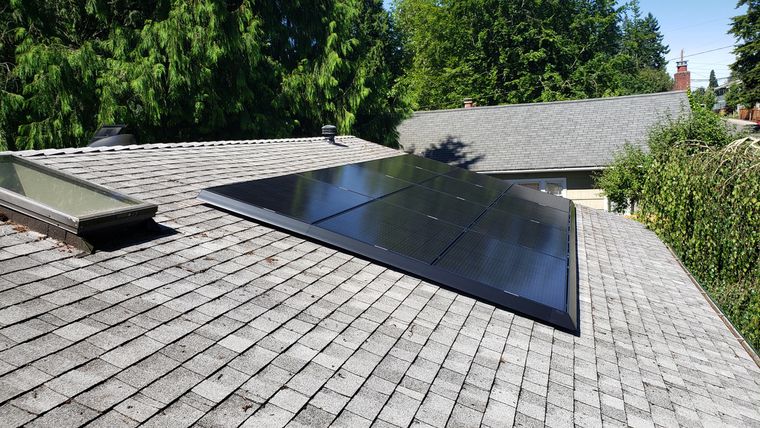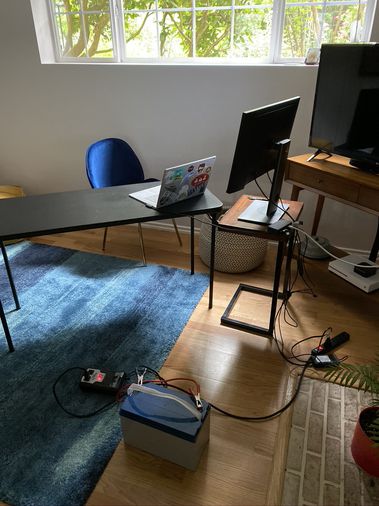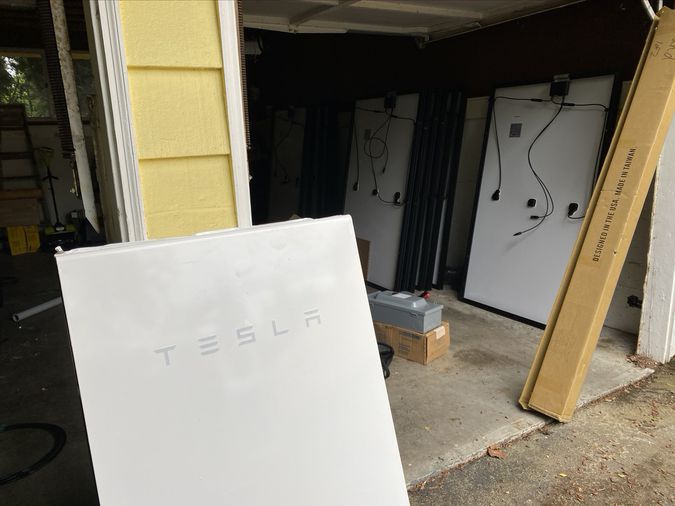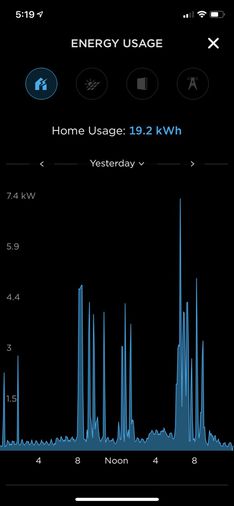We installed a solar array on the house last week.

I ordered a 4 kW solar array and 13 kWh PowerWall from Tesla. They made the ordering and install process really simple, but in classic Tesla fashion it was a lot of hurry up and wait, then immediate motion. All of my interactions with the local install team, Northwest Electric & Solar, were excellent. I’m really happy with all the work they did.
I went back and forth a lot on whether to get the battery. It doubled the total cost, and I wasn’t sure how much power a 4kW array was going to generate. In the end, I decided the battery was worth it, because it extends the usefulness of the array so much. It lets you use the power generated well into the evening and during grid outages, both of which are more interesting to me than purely getting paid back excess power from the grid.
We also figured out how to run our internet off a battery, purchased during my initial foray into how solar/batteries/inverters worked, while they installed the battery’s big brother in the garage.


The Tesla app includes how much power your house is using at any given time. PSE also includes a daily download of power usage, so between the two I’ve got some pretty good guesses how much power our house uses and how effective the solar will be when it gets finalized and turned on.

In a normal, puttering around the house day, we use about 20-25 kWh of electricity. Since quarantine started, that’s been very consistent. On a day that we’re not home, our house’s base load (fridge, water heater, etc) is about 5 kWh. On days I drive the car to work (remember driving to work?), it goes up to about 30-35 kWh, and if I take a longer road trip 50-60. (Roughly speaking, the car gets 4 miles / kWh).
The solar panels max out at 4kW, so if they generate about half that for 10 hours of sunshine, that’s about 20 kWh going into the house/battery. Seems like that should cover about 80% of our bill, with some extra going back into the grid occasionally and some good days being higher. In the winter, I’m not expecting more than half that. Washington’s winters are pretty dark.
Now I find myself impatiently waiting for PSE to install the reversible meter, and vaguely upset with bright, sunny days that are not feeding my house.